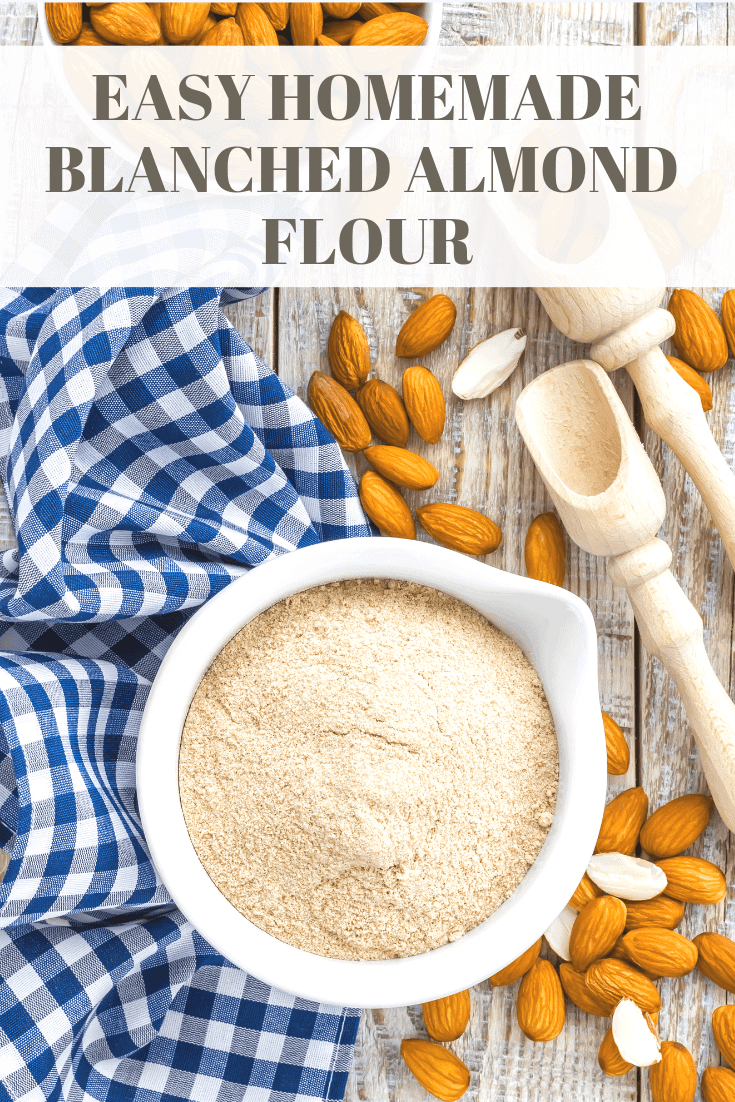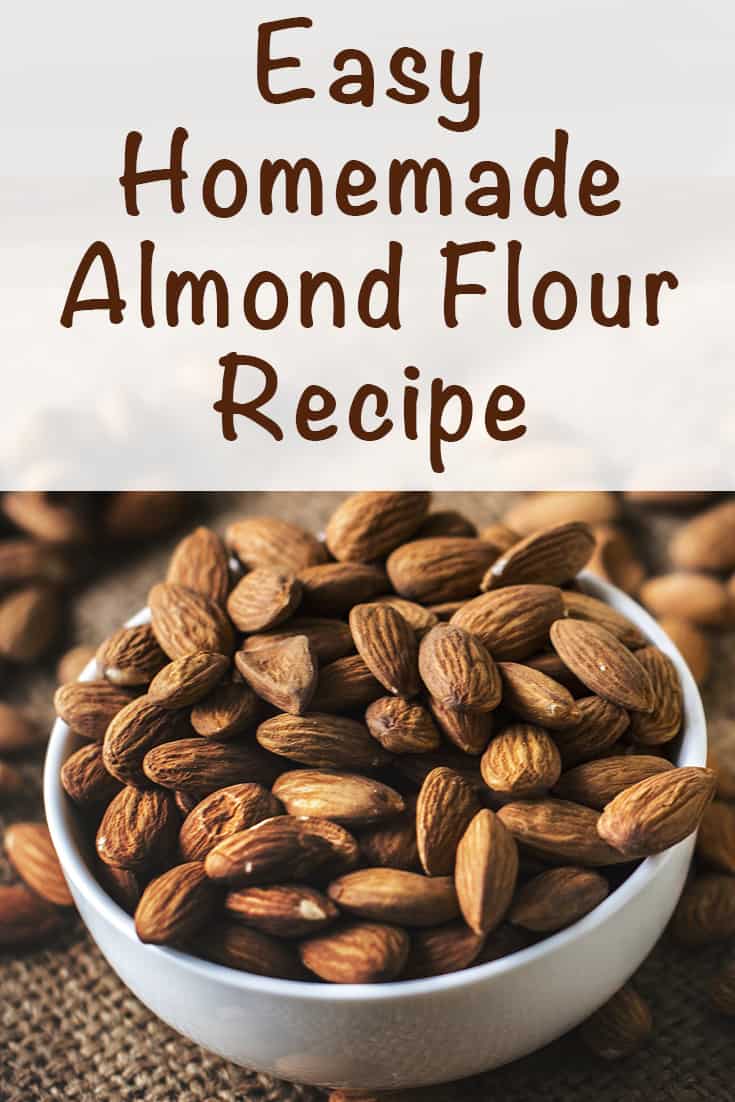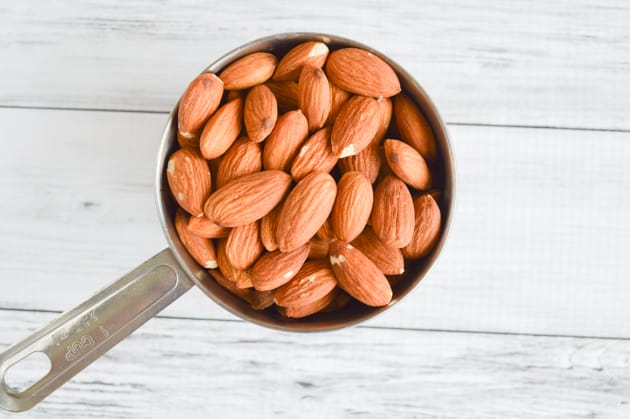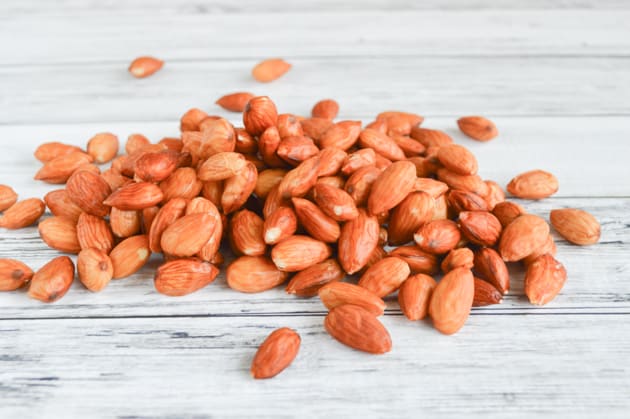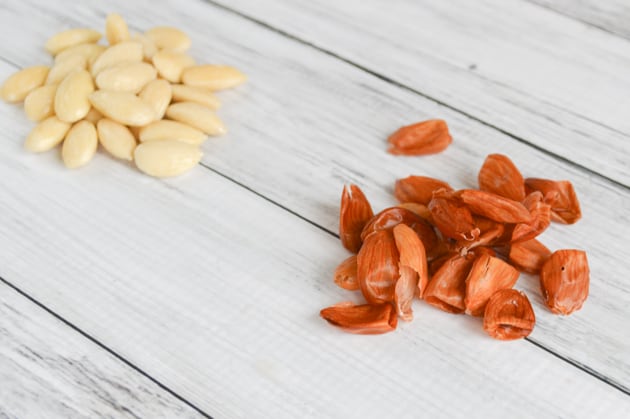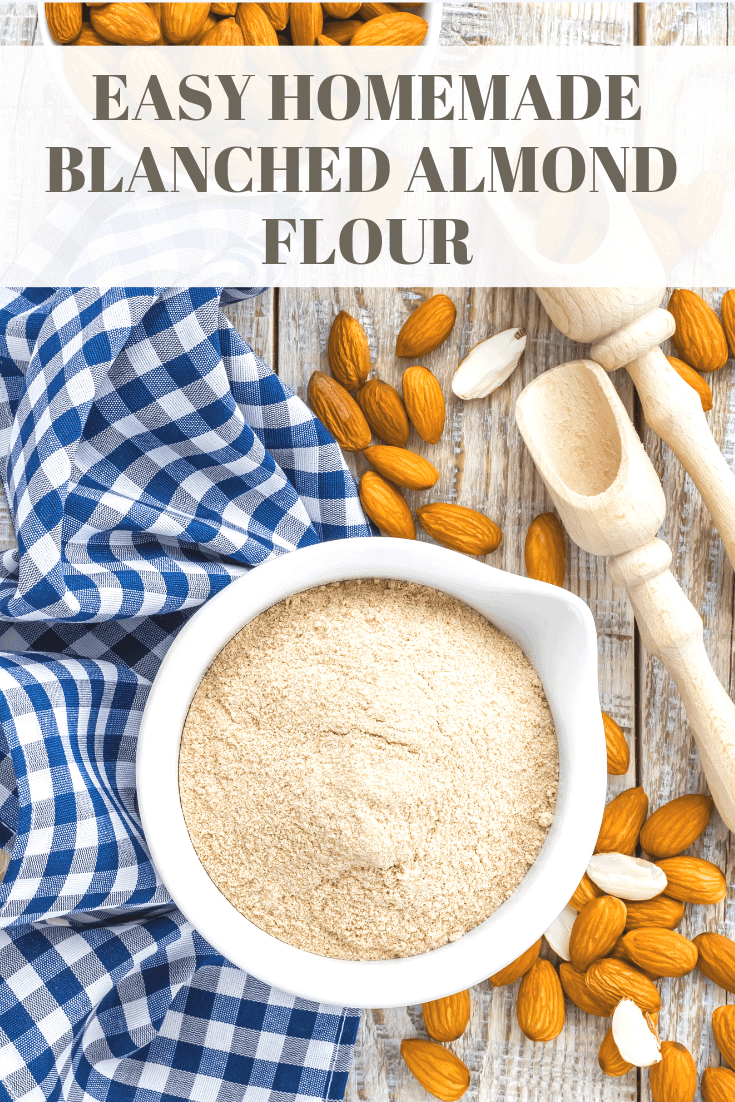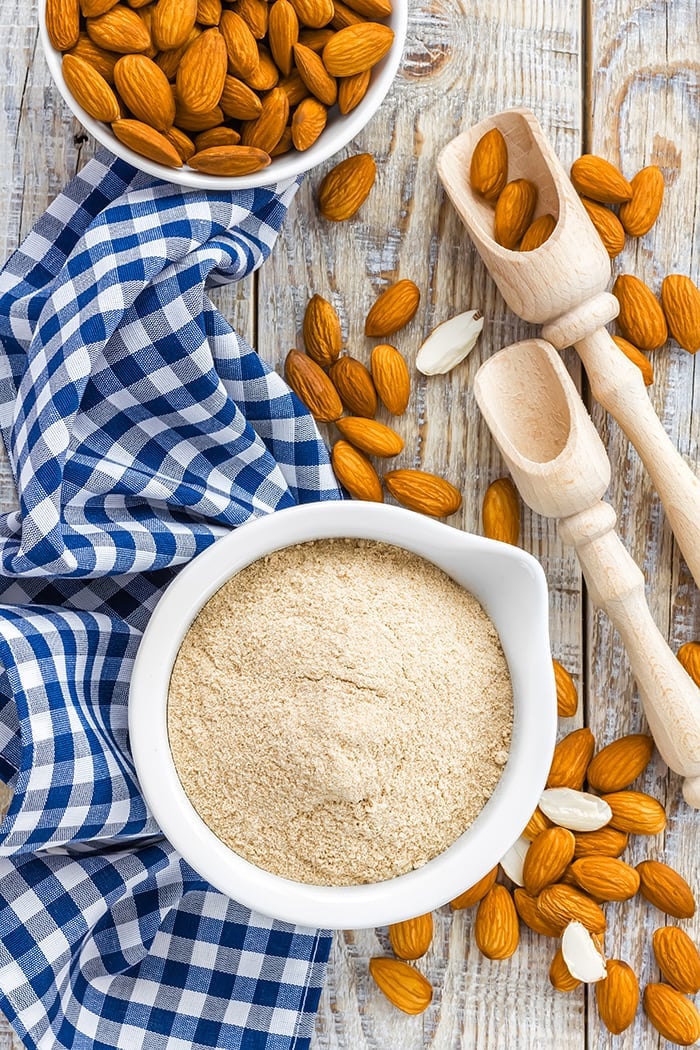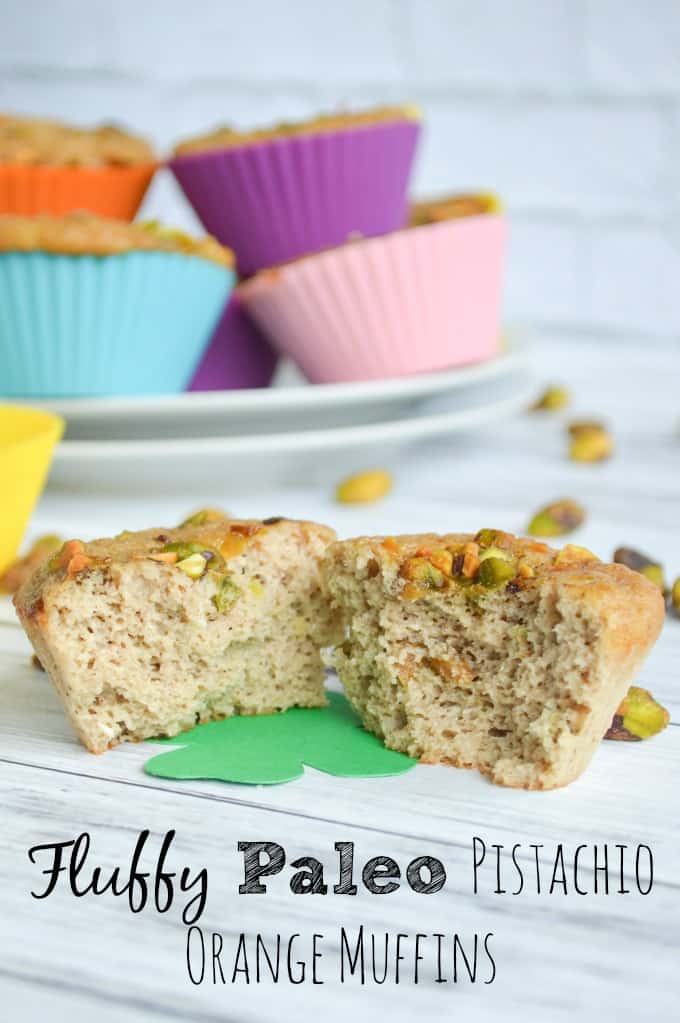When I was taking restaurant entrepreneurship classes in college, one of my professors loved emphasizing the importance of overlapping ingredients that go into multiple recipes. Not only do overlapping ingredients simplify purchases and storage, but they can also help you cut costs/save money. That’s why I started making my own almond flour instead of buying it! Once you see how easy it is to make your own blanched almond flour at home, I bet you’ll never buy almond flour again!
You can generally get a pound of almonds cheaper than a pound of almond flour, and grinding your own blanched almond flour also allows you greater flexibility. I buy my almonds whole, and then make small batches of almond flour as needed. It’s quick, easy, and doesn’t even require an expensive high-powered blenders! I hope you enjoy this recipe for homemade almond flour!
How to make blanched almond flour
While I typically use whole almonds and blanche them myself, you can use pre-blanched almonds or almond slivers. I’ve never tried to blanche slices that still have attached skin, but I think it would be very difficult and not worth the effort. Blanching whole almonds to remove their skin is incredibly easy. If you only have a small food processor, work one cup at a time. For years I used a small food processor to make almond flour and it worked just fine. If you have a larger food processor or powerful blender, just scale up to meet your almond flour needs! We’ve had a Ninja Pro blender for several years now and use it every day. It is absolutely one of our best purchases ever. If you’re using slivers, just skip ahead to the second part of the recipe. =)
Do you have to blanche almonds for almond flour?
I’ve had some comments from people wondering if you have to blanche almonds to make almond flour. The answer is…not really, but I recommend it. Blanching the almonds will give you a finer almond flour that’s more like commercially ground flour. You can make unbalanced almond flour, but it will have a coarser texture. Your baked goods will be lighter/fluffier if you use blanched almond flour.
How to blanche almonds
Blanching the almonds is simply a matter of loosening the skins in boiling water for one minute. I always set a timer because boiling them longer can result in mushy, slightly-cooked almonds! After they’ve been boiled, they will look something like this:
The almonds will be kind of wrinkly and weird looking! All you have to do is gently squeeze them out of their skins. If you’re feeling silly not careful, the almonds can shoot out of their skins, so make sure you’re pointing your almonds in a safe direction! You can compost the skins or put them in smoothies.
After your almonds are blanched and dry again, all you have to do is grind them up in your food processor or blender and sift the mixture through a fine mesh strainer. Sifting is technically optional, but it will remove any larger pieces and make a finer almond flour that’s more similar to commercially ground almond flour. You can check out slightly more detailed instructions in the recipe box below. That’s all there is to it! You just made your own almond flour, and probably saved a chunk of change, too.
If you enjoy baking with almond flour, stop by this recipe for Paleo pistachio muffins!
What will you bake with your almond flour?
